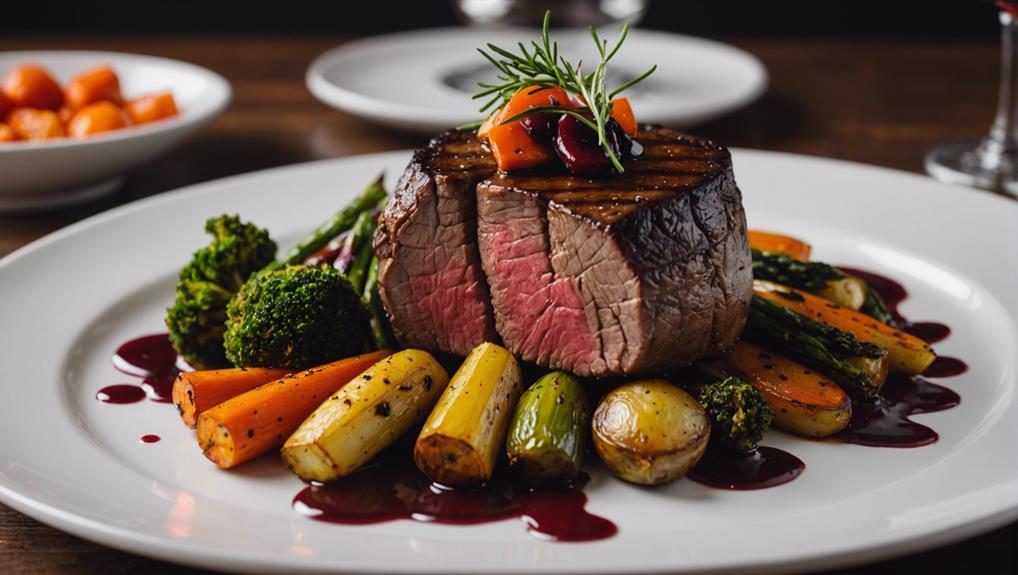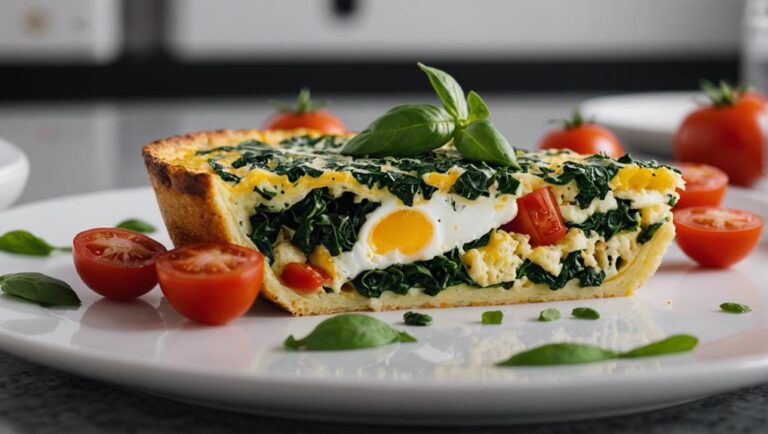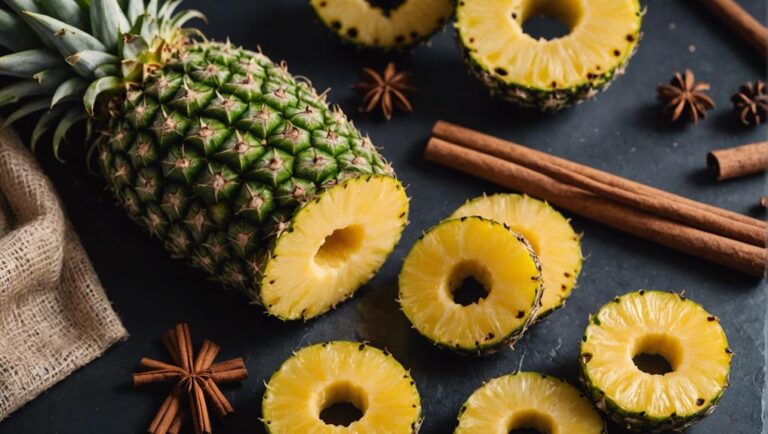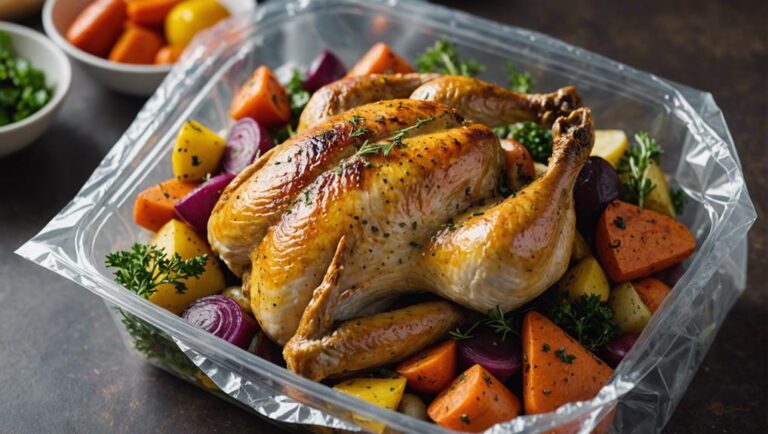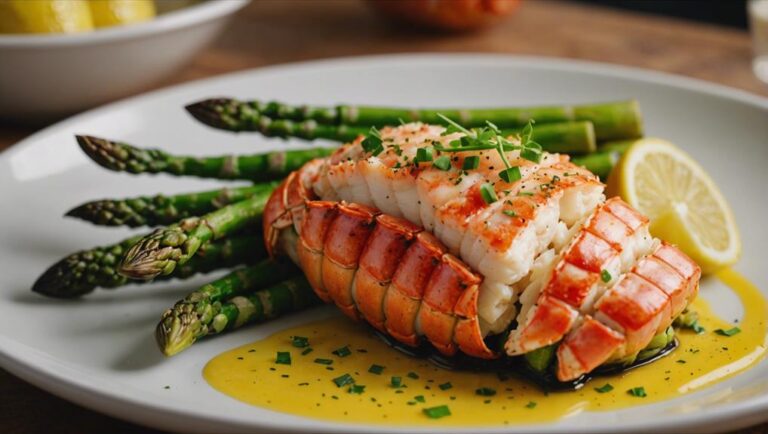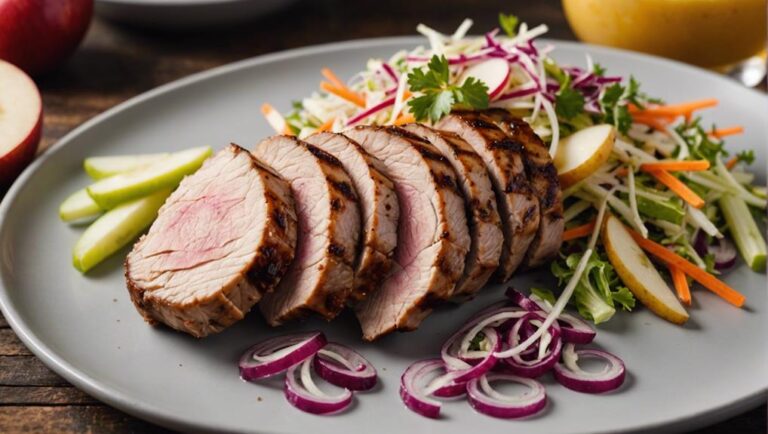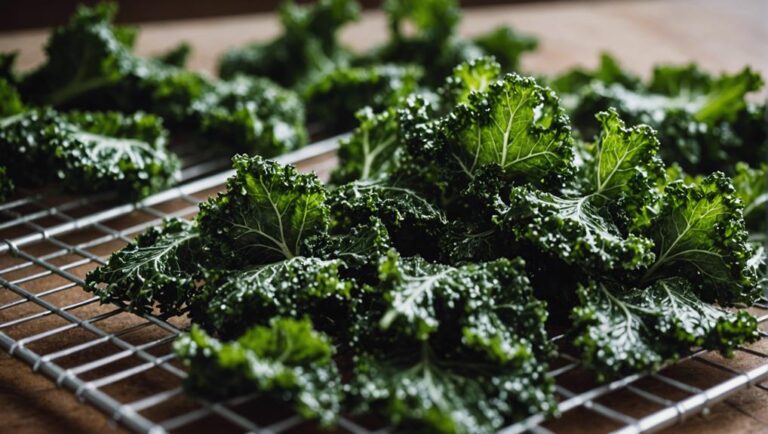Sous Vide Filet Mignon for a Lean Luxury Meal
Achieve gourmet elegance with sous vide filet mignon—a prime choice for a lean luxury meal. Seal the tender cut in a bag, immerse in a water bath, and revel in its unrivaled tenderness and taste. Searing post-sous vide seals the deal, enhancing flavors and creating a delectable crust. Elevate your dining experience by savoring this culinary masterpiece that promises a symphony of flavors. Discover the secrets to perfect filet mignon—tender, moist, and bursting with flavor—by embracing the sous vide technique. Your taste buds will thank you for this delectable journey into the world of exquisite cuisine.
What You Will Learn Here
- Sous vide technique preserves filet mignon's natural juices for ultimate tenderness.
- Achieve precise temperature control for perfectly cooked, lean filet mignon.
- Elevate the luxurious lean cut with a perfectly seared crust post-sous vide.
- Pair with sophisticated sides like truffle-infused sauce or creamy mashed potatoes.
- Sous vide ensures consistent results, enhancing the mild flavors of filet mignon.
Origin of Sous Vide
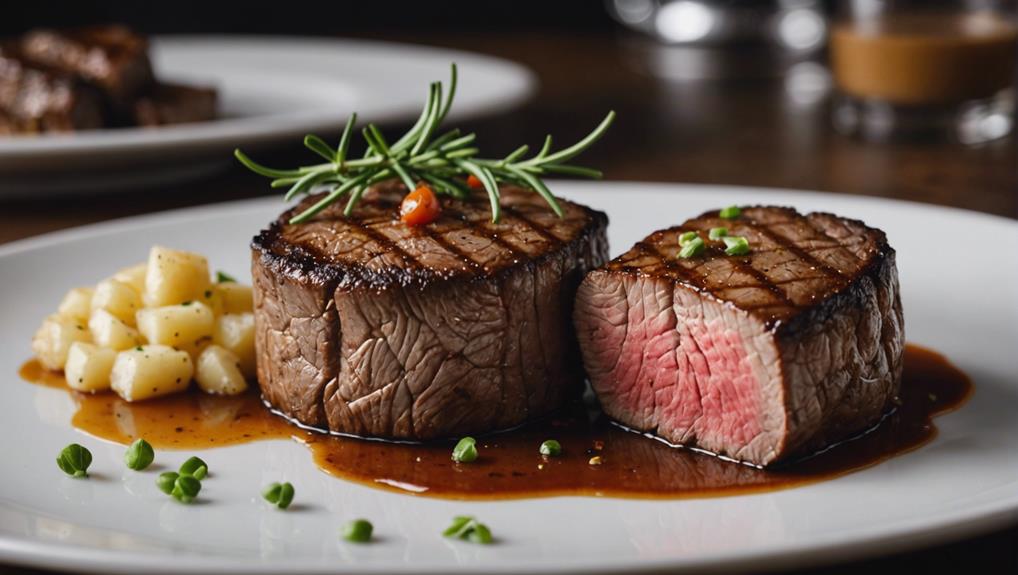
You may find it intriguing to know that sous vide cooking has its roots traced back to the 1960s in France, where it first emerged as a method primarily utilized for cooking foie gras.
Over time, this culinary technique evolved and gained prominence, particularly through the innovative work of esteemed French chef Georges Pralus, who adapted it for cooking various meats.
The term 'sous vide', translating to 'under vacuum' in French, alludes to the fundamental vacuum-sealing process integral to this cooking method.
Sous Vide Origins
Originating in France during the 1970s, sous vide cooking emerged as a groundbreaking method initially focused on achieving consistent results with foie gras. The term 'sous vide' translates to 'under vacuum' in French, highlighting the importance of the vacuum-sealing process in this culinary technique.
Chef Georges Pralus played a significant role in adapting sous vide for proteins like meats and poultry, revolutionizing the way these ingredients were cooked. With its precision and ability to maintain food quality, sous vide quickly gained popularity in professional kitchens.
Over time, this cooking method has evolved into home kitchens, offering home cooks the same level of precision and consistent results that were once exclusive to restaurants.
Culinary Technique Evolution
Through the evolution of culinary techniques, the origin of sous vide cooking in France during the 1960s marked a significant advancement in achieving precise temperature control and consistent results in restaurant kitchens.
This revolutionary method, championed by French chef Georges Pralus, introduced the sous vide process, which involves vacuum-sealing ingredients in bags and cooking them in a water bath at precise temperatures.
The term 'sous vide,' meaning 'under vacuum,' reflects the core principle of this technique. Drawing inspiration from food preservation methods used in laboratories, sous vide has evolved to enhance the flavors and textures of dishes while maintaining their natural juices.
Its popularity stems from the ability to cook food evenly, resulting in delectable meals with unparalleled taste and tenderness.
Sous Vide Benefits
The evolution of culinary techniques led to a groundbreaking advancement with the introduction of sous vide cooking in France during the 1960s, fundamentally transforming how chefs approached precision temperature control and flavor enhancement in the kitchen. The sous vide method involves vacuum-sealing food in a bag and cooking it in a water bath at a precise temperature for an extended period. This technique guarantees consistent doneness throughout the food item, preserving its natural juices and flavors. Sous vide cooking allows for precise control over the cooking process, resulting in perfectly cooked dishes every time. Professional chefs initially adopted this method for its ability to maintain consistent temperatures and textures, eventually making its way into home kitchens with the availability of affordable sous vide machines.
| Sous Vide Benefits | ||
|---|---|---|
| Precise Temperature Control | Flavor Enhancement | Consistent Texture Maintenance |
Filet Mignon Marbling Levels
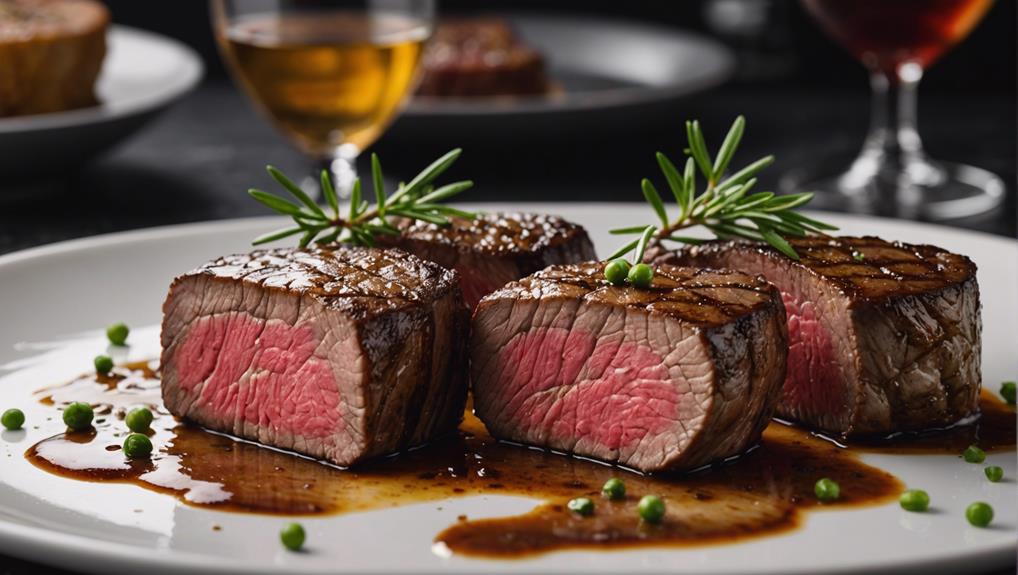
With filet mignon being a lean cut of beef, its marbling levels are notably lower compared to other cuts, affecting both its flavor and texture. When it comes to filet mignon marbling levels, here are some key points to take into account:
- Limited Marbling: Due to its location in the tenderloin muscle, filet mignon has minimal marbling compared to fattier cuts like ribeye or New York strip.
- Tender Texture: The lack of marbling in filet mignon contributes to its tenderness, as it has less connective tissue and intramuscular fat.
- Mild Flavor: While the low marbling may result in a milder taste, proper cooking techniques can enhance the overall flavor and juiciness of the filet mignon.
Understanding the marbling levels in filet mignon is essential for achieving the desired results when cooking this premium cut of beef. By mastering the cooking techniques tailored to this lean cut, you can elevate its taste and texture to create a truly luxurious dining experience.
Sous Vide Filet Mignon Variations
When exploring Sous Vide Filet Mignon Variations, consider the Perfectly Seared Filet Mignon Recipe for a delectable crust.
Pairing your sous vide filet mignon with a luxurious Blue Cheese Mousse can elevate the dish to new heights.
Experimenting with different pairings and techniques can add a delightful twist to your sous vide filet mignon experience.
Perfectly Seared Filet Mignon Recipe
For a delectable twist on your sous vide filet mignon, consider exploring variations that enhance the steak's exquisite flavors through innovative searing techniques. When perfecting the sear on your filet mignon, keep these tips in mind:
- Cast Iron Searing: Utilize a cast-iron skillet for a beautifully caramelized crust.
- Herb Butter Basting: Elevate the flavors by basting the steak with herb-infused butter during the searing process.
- Reverse Searing: Try the reverse sear method by searing the steak first, then finishing it in the sous vide for a unique texture.
Mastering the art of searing can take your sous vide filet mignon to new heights, offering a symphony of flavors with each bite.
Blue Cheese Mousse Pairing
To elevate your sous vide filet mignon to a gourmet level, consider enhancing its flavors with a luxurious pairing of blue cheese mousse. The creamy and tangy element of the blue cheese mousse perfectly complements the rich and tender steak, creating a luxurious flavor profile that will impress your taste buds.
Here are some key points to keep in mind:
- Blue cheese mousse adds a unique creaminess and tanginess to the dish.
- The bold flavor of blue cheese pairs exceptionally well with the delicate taste of filet mignon.
- Transform the mousse into a light and airy foam using a whipping siphon for a visually stunning presentation.
Sous Vide Filet Mignon Pairing
Enhance your sous vide filet mignon dining experience with a selection of refined pairings that elevate the dish to new heights of culinary sophistication.
When it comes to pairing options for filet mignon, red wine varietals like Cabernet Sauvignon or Pinot Noir can complement the dish's richness and tenderness.
Consider experimenting with different herb and spice blends to create unique flavor profiles that enhance the natural taste of the filet mignon.
To add a touch of luxury, opt for a truffle-infused sauce or butter that will elevate the dining experience.
Whether you choose to serve it with creamy mashed potatoes, roasted vegetables, sautéed wild mushrooms, or a fresh green salad with a light vinaigrette, these pairings will surely delight your taste buds.
Sous Vide Temperature Guide
When it comes to cooking filet mignon sous vide, precise temperature control is key. Maintaining a temperature range between 110-125°F guarantees the perfect balance of tenderness and juiciness in your steak.
Make sure to follow temperature precision tips to achieve best results.
Temperature Precision Tips
How can you guarantee precise temperature control in sous vide cooking for perfect results?
When cooking delicate cuts like filet mignon, precision is vital. Set your sous vide machine to the recommended temperature range of 130-135°F for filet mignon to achieve ideal tenderness. Make sure your machine maintains this temperature within a 1-degree Fahrenheit range throughout the cooking process. By doing so, you'll consistently achieve your desired level of doneness without the risk of overcooking.
Sous vide machines offer adjustable settings that allow you to monitor and adjust temperatures with ease, providing you with the flexibility to customize your cooking experience. Following a sous vide temperature guide will help you master the art of cooking filet mignon to perfection.
Cooking Time Recommendations
To achieve peak tenderness and flavor when cooking filet mignon sous vide, adhere closely to the recommended cooking times based on the thickness of the cut. For a 2-inch thick filet mignon, sous vide cooking typically ranges from 90 minutes to 2 hours. Remember, longer cooking times can affect the texture of very tender cuts like filet mignon, so timing is essential.
The precision of timing is key to achieving the desired level of tenderness and doneness in sous vide filet mignon. Sous vide cooking offers flexibility in cooking times depending on the specific cut of meat being prepared. Stay mindful of these cooking time recommendations to make sure that your filet mignon turns out perfectly tender and delicious every time.
Achieving Optimal Tenderness
For ideal tenderness in preparing filet mignon sous vide, maintaining a cooking temperature of 125°F or below is highly recommended. When cooking filet mignon at lower temperatures, around 125°F, you help preserve the delicate texture of this premium cut.
Precise temperature control with sous vide cooking guarantees that your filet mignon achieves edge-to-edge doneness without the risk of overcooking, resulting in a consistently tender bite every time. Cooking filet mignon above 125°F can lead to a less tender texture, so sticking to the recommended temperature range is essential for a luxurious dining experience.
With sous vide cooking, you have the freedom to achieve ideal tenderness in your filet mignon, making it a reliable method for creating a perfectly tender meal.
Final Thoughts
In considering the sous vide filet mignon recipe, it becomes evident that this cooking method truly enhances the dining experience to a level of unparalleled excellence. The sous vide technique guarantees the best results for your filet mignon by providing precise temperature control throughout the cooking process. By sealing the meat in a bag and immersing it in a water bath at a consistent temperature, you achieve perfectly cooked filet mignon every time. The searing process post-sous vide enhances the flavors, creating a delightful crust on the outside while maintaining the juiciness within.
—
| Benefits of Sous Vide Filet Mignon | Description |
|---|---|
| Melt-in-your-mouth tenderness | Sous vide preserves natural juices, keeping the meat tender. |
| Precise internal temperature control | Accurate temperature control guarantees perfect doneness. |
| Consistent results | Eliminates the risk of overcooking for a reliable outcome. |
| Enhanced flavor through searing | Searing after sous vide enhances taste and texture. |
Frequently Asked Questions
Is It Worth It to Sous Vide Filet Mignon?
Absolutely, sous vide filet mignon is worth it. You'll relish the precision, tenderness, and juicy perfection every time. Elevate your dining experience with this method, ensuring a luxurious meal that's consistently delightful.
What Cut Is a Poor Man's Filet Mignon?
You're wondering about the poor man's filet mignon. It's the chuck eye steak, a more affordable option with good marbling and flavor. Though not as tender as filet mignon, it's a versatile cut that can be cooked in various ways.
Is Filet Mignon a Lean Meat?
Yes, filet mignon is a lean meat. It contains minimal fat content, making it a popular choice for those seeking a healthier option. With its tenderness and low fat content, filet mignon is a luxurious yet lean cut.
How Does Gordon Ramsay Cook the Perfect Filet Mignon?
To cook the perfect filet mignon, season with salt and pepper, sear in a hot pan with butter and herbs, rest the steak to let flavors settle, baste for enhanced taste, use a meat thermometer for doneness, and enjoy the simplicity and quality ingredients.
Conclusion
You've just experienced the ultimate in lean luxury dining with sous vide filet mignon. By carefully selecting your marbling level and using precise temperature control, you can create a perfectly cooked steak every time.
Whether you prefer a rare, medium, or well-done finish, sous vide cooking allows you to achieve your desired level of doneness with ease.
Elevate your culinary skills and impress your guests with this exquisite dish at your next dinner party. Bon appétit!
